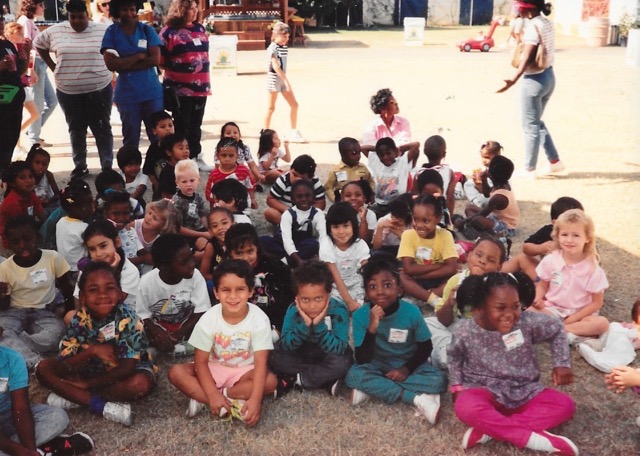I grew up in Phoenix, AZ, specifically in South Phoenix, which is a predominately Mexican-American community. I am Mexican-American. I went to elementary school in South Phoenix and, after years of struggling with shyness, I made numerous friends of many ethnic backgrounds.
Just as I finally felt I was really fitting in, my parents transferred me to a predominately-white, middle-class high school. They wanted to give me a better education than the resource-limited schools in South Phoenix could provide. Yet again, I struggled with my timidity but, again, eventually made lots of friends. I simply learned not to mention the obvious differences between us. South Phoenix was known among some of my classmates as a “ghetto” and so I invited only select friends to my house; more concerning to me than cultural differences, was the fear that I be labeled as poor.

Amelia circa 1992 at Maxine O Bush Elementary School, South Phoenix
Fast-forward nine years to my first year of graduate school. I was about to learn that there were more isolating feelings than introversion and more troubling labels than poor. When I arrived in Washington DC, I was shocked to see the level of segregation that existed. Phoenix was highly economically stratified but not nearly so racially separated. This segregation extended to academia. I was lost in a new culture and in a department with few students and no faculty that reflected my life experience. My extreme introversion that lay dormant for nearly 10 years reemerged in my first semester. That first winter in DC was cold both figuratively and literally. I longed for my family and the sun. I was so miserable that I seriously considered quitting.
Luckily, deliverance was found in two other women in my cohort. Rarely is there the opportunity for three relatively underprivileged Hispanic women to take part in a top program in the country and our unlikely trio was due to our perseverance; for example, two of us were accepted to graduate school on the condition that we find our own funding sources, which we did. We rescued each other in that first year by sharing our initial gloom and reminding each other of our strength. We provided a solid support system for one another for the next five years. We realized how important it was that we shared a cultural background because of the highly segregated academic system. For the first time in my life, I was faced with defining myself by the color of my skin. We were both the “minority representatives” in any situation as well as the “broader impacts.” We questioned whether we deserved to be where we were. We were labeled as angry, negative, and shrill. Together we wondered if there was something wrong with us and together we learned that there was not.
And so this is my advice for other women, graduate students of color, or really anyone: don’t do this alone.
Find a group in your cohort, department, or your university. Find someone that can share your experience, and most importantly, don’t be afraid to reach out. Reach out to me or any other person you think might offer some support because they likely will. The more I have reached out, the more confident I have become, though the struggle is not over. I want very badly to succeed in academia in part to be the professorial face that was absent from my graduate experience. I want others to know that they are neither negative nor shrill and that they deserve to be where they are. As a start at this, my friends and I recently received a grant to develop a STEM recruiting workshop for undergraduate minority students. I know that I can only offer my own life experience, but my experience has taught me not to discount those who are different than me. Whether we are women, Hispanic, black, poor, gay, or transgender we are slowly emerging from the shadows and adding a little color to academia’s monochrome.


